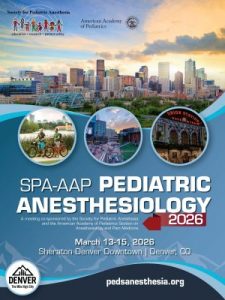{“questions”:{“tc0ka”:{“id”:”tc0ka”,”mediaType”:”image”,”answerType”:”text”,”imageCredit”:””,”image”:””,”imageId”:””,”video”:””,”imagePlaceholder”:””,”imagePlaceholderId”:””,”title”:”A 1-week-old term neonate is undergoing an exploratory laparotomy for duodenal atresia. The patient\u2019s vital signs include a heart rate of 170 bpm, a systolic blood pressure of 40 mmHg, and capillary refill time of 7 seconds. The patient has already received a 60mL\/kg bolus of isotonic saline. Administration of which of the following is the next best step in the management of this patient?”,”desc”:””,”hint”:””,”answers”:{“tafpx”:{“id”:”tafpx”,”image”:””,”imageId”:””,”title”:”A. Dopamine infusion at 5 mcg\/kg\/min”,”isCorrect”:”1″},”3bkzl”:{“id”:”3bkzl”,”image”:””,”imageId”:””,”title”:”B. Vasopressin infusion at 0.2 milli-units\/kg\/min”},”806t9″:{“id”:”806t9″,”image”:””,”imageId”:””,”title”:”C. Albumin 5% \u2013 20 mL\/kg bolus”},”plsph”:{“id”:”plsph”,”image”:””,”imageId”:””,”title”:”D. Norepinephrine infusion at 0.01 mcg\/kg\/min”}}}},”results”:{“9hvua”:{“id”:”9hvua”,”title”:””,”image”:””,”imageId”:””,”min”:”0″,”max”:”1″,”desc”:””,”redirect_url”:”https:\/\/pedsanesthesia.org\/wp-content\/uploads\/2025\/11\/Week-274-Neonatal-Sepsis.pdf”}}}
Question of the Week #273
{“questions”:{“aszm9”:{“id”:”aszm9″,”mediaType”:”image”,”answerType”:”text”,”imageCredit”:””,”image”:””,”imageId”:””,”video”:””,”imagePlaceholder”:””,”imagePlaceholderId”:””,”title”:”A ten-year-old male with a past medical history of spina bifida with tethered cord presents for surgical reduction of a hip dislocation. Which regional technique is most likely to provide effective intra- and post-operative analgesia for this patient? “,”desc”:””,”hint”:””,”answers”:{“haeot”:{“id”:”haeot”,”image”:””,”imageId”:””,”title”:”A.\tSpinal anesthesia “},”zi0pl”:{“id”:”zi0pl”,”image”:””,”imageId”:””,”title”:”B.\tFemoral nerve block “},”z37pz”:{“id”:”z37pz”,”image”:””,”imageId”:””,”title”:”C.\tFascia Iliaca plane block “,”isCorrect”:”1″},”vmoad”:{“id”:”vmoad”,”image”:””,”imageId”:””,”title”:”D.\tLateral femoral cutaneous nerve block “}}}},”results”:{“oylau”:{“id”:”oylau”,”title”:””,”image”:””,”imageId”:””,”min”:”0″,”max”:”1″,”desc”:””,”redirect_url”:”https:\/\/pedsanesthesia.org\/wp-content\/uploads\/2025\/11\/QoW-273-Fascia-Iliac-Plane-Block.pdf”}}}
Question of the Week #272
{“questions”:{“ikmmv”:{“id”:”ikmmv”,”mediaType”:”image”,”answerType”:”text”,”imageCredit”:””,”image”:””,”imageId”:””,”video”:””,”imagePlaceholder”:””,”imagePlaceholderId”:””,”title”:”A 6-month-old male with imperforate anus and diverting colostomy presents for anorectoplasty. Prior medical history is notable for polydactyly and cleft palate. Vertebral, cardiac, and renal ultrasounds are negative. During surgery, he develops signs of adrenal crisis. Which of the following syndromes is MOST associated with these findings?”,”desc”:””,”hint”:””,”answers”:{“ljg6g”:{“id”:”ljg6g”,”image”:””,”imageId”:””,”title”:”A.\tCat Eye “},”70dla”:{“id”:”70dla”,”image”:””,”imageId”:””,”title”:”B.\tCurrarino “},”u0psp”:{“id”:”u0psp”,”image”:””,”imageId”:””,”title”:”C.\tPallister Hall “,”isCorrect”:”1″},”w6xff”:{“id”:”w6xff”,”image”:””,”imageId”:””,”title”:”D.\tTownes-Brocks “}}}},”results”:{“rfx3g”:{“id”:”rfx3g”,”title”:””,”image”:””,”imageId”:””,”min”:”0″,”max”:”1″,”desc”:””,”redirect_url”:”https:\/\/pedsanesthesia.org\/wp-content\/uploads\/2025\/11\/Week-272-Anorectal-Disease.pdf”}}}
Question of the Week #271
{“questions”:{“pc78r”:{“id”:”pc78r”,”mediaType”:”image”,”answerType”:”text”,”imageCredit”:””,”image”:””,”imageId”:””,”video”:””,”imagePlaceholder”:””,”imagePlaceholderId”:””,”title”:”A 6-week-old full term male infant is observed to have episodic apnea in the post anesthesia care unit after an uneventful laparoscopic pyloromyotomy. Which of the following is the most likely cause of the apnea?”,”desc”:””,”hint”:””,”answers”:{“dc8ry”:{“id”:”dc8ry”,”image”:””,”imageId”:””,”title”:”A.\tAnemia”},”engt3″:{“id”:”engt3″,”image”:””,”imageId”:””,”title”:”B.\tCerebrospinal fluid alkalosis”,”isCorrect”:”1″},”7m97c”:{“id”:”7m97c”,”image”:””,”imageId”:””,”title”:”C.\tHypoglycemia”},”yufup”:{“id”:”yufup”,”image”:””,”imageId”:””,”title”:”D.\tObstructive sleep apnea”}}}},”results”:{“um8v0”:{“id”:”um8v0″,”title”:””,”image”:””,”imageId”:””,”min”:”0″,”max”:”1″,”desc”:””,”redirect_url”:”https:\/\/pedsanesthesia.org\/wp-content\/uploads\/2025\/11\/Week-271-Pyloric-Stenosis.docx.pdf\t”}}}
Question of the Week #270
{“questions”:{“7vm9v”:{“id”:”7vm9v”,”mediaType”:”image”,”answerType”:”text”,”imageCredit”:””,”image”:””,”imageId”:””,”video”:””,”imagePlaceholder”:””,”imagePlaceholderId”:””,”title”:”When analyzing a data set of patients who will be undergoing tonsillectomy, which of the following analytic techniques would be BEST to determine the likelihood of obstructive sleep apnea (OSA) in patients with varying degrees of tonsillar hypertrophy?”,”desc”:””,”hint”:””,”answers”:{“1rxtc”:{“id”:”1rxtc”,”image”:””,”imageId”:””,”title”:”A.\tChi Square Model”},”8tf8j”:{“id”:”8tf8j”,”image”:””,”imageId”:””,”title”:”B.\tLogistic Regression Analysis”,”isCorrect”:”1″},”s2fhs”:{“id”:”s2fhs”,”image”:””,”imageId”:””,”title”:”C.\tPaired T-Test”},”rbdtv”:{“id”:”rbdtv”,”image”:””,”imageId”:””,”title”:”D.\tKruskal-Wallis Test “}}}},”results”:{“hss4f”:{“id”:”hss4f”,”title”:””,”image”:””,”imageId”:””,”min”:”0″,”max”:”1″,”desc”:””,”redirect_url”:”https:\/\/pedsanesthesia.org\/wp-content\/uploads\/2025\/10\/Week-270-Logistic-Regression.docx.pdf”}}}
- 1
- 2
- 3
- …
- 47
- Next Page »
